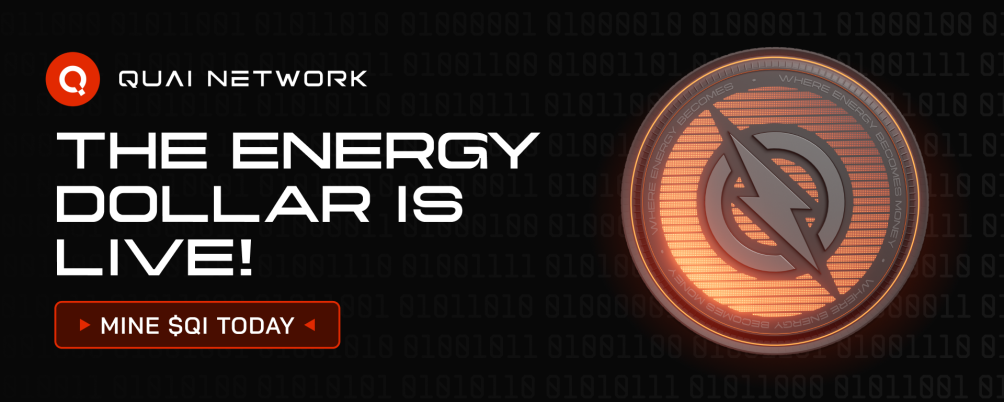
Quai Network announced today the official launch of mining operations for $QI, the world’s first decentralized energy dollar. This milestone marks the culmination of more than six years of development and successful stress testing across various testnet environments.
Key Features of $QI
Decentralized Energy Backing: $QI functions as a flat-coin backed by a global network of miners with a decentralized monetary policy
Energy-Based Valuation: Created proportionally to network mining hashrate and power requirements, positioning $QI as a true energy-based currency
Cash-Like Privacy: Implements fixed denominations in a UTXO ledger with protocol-enforced non-address-reuse, providing similar privacy properties to physical cash
Zero Initial Supply: The tokenomics start with 0 initial supply, with emissions directly proportional to network hashrate
Earning Opportunities
Mining: Miners can earn $QI by setting their preference in the go-quai node or through stratum when connecting to a decentralized mining pool
Conversion: Users can convert existing $QUAI to $QI through the Market Making feature in the Pelagus Wallet
Future Expansion: A wrapped version of $QI will soon be available on the EVM-compatible $QUAI ledger, enabling swaps with any token on Quai Network through decentralized exchanges
Tokenomics & Lockups:
$QI incorporates the same default lockup period of 2 weeks as $QUAI, meaning the initial supply won’t be available for circulation until this period expires. Miners will have the option to choose extended lockup periods for additional rewards in the future.
“The launch of $QI represents a fundamental innovation in cryptocurrency – creating the world’s first truly decentralized energy dollar,” said Alan Orwick, co-founder of Quai Network. “This achievement builds upon our successful $QUAI launch and demonstrates our commitment to developing blockchain solutions that connect digital assets directly to real-world energy value.”
About Quai Network
Quai Network is pioneering scalable and energy-efficient blockchain technology through its innovative Proof of Minimum Entropy (PoEM) consensus mechanism. The network uniquely combines execution sharding, parallel processing, and a hierarchical merged mining architecture to deliver superior throughput while maintaining decentralization and security.
